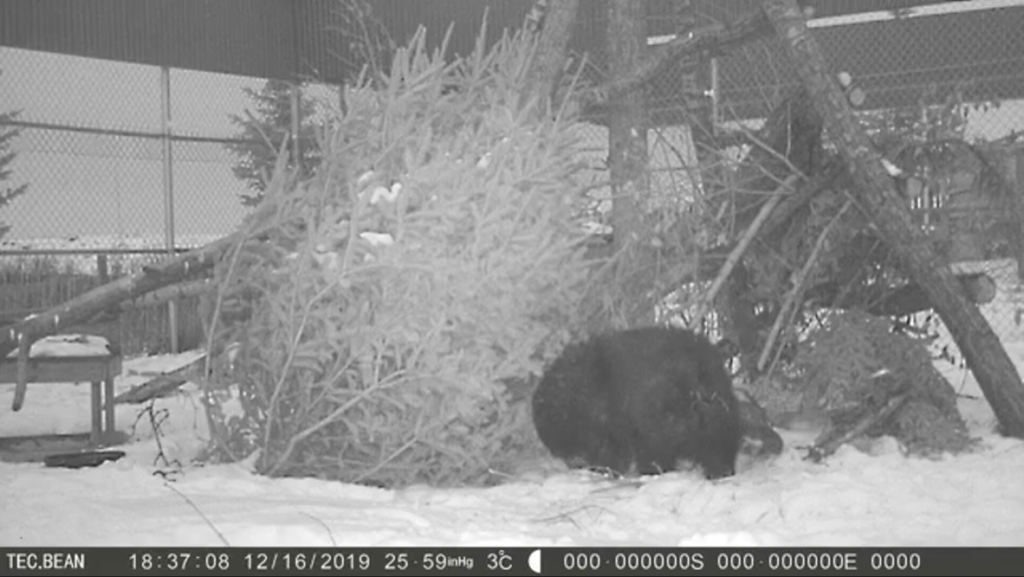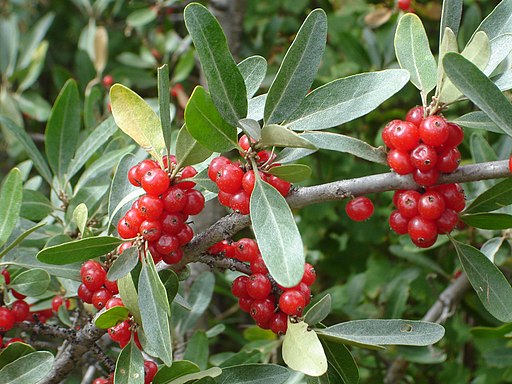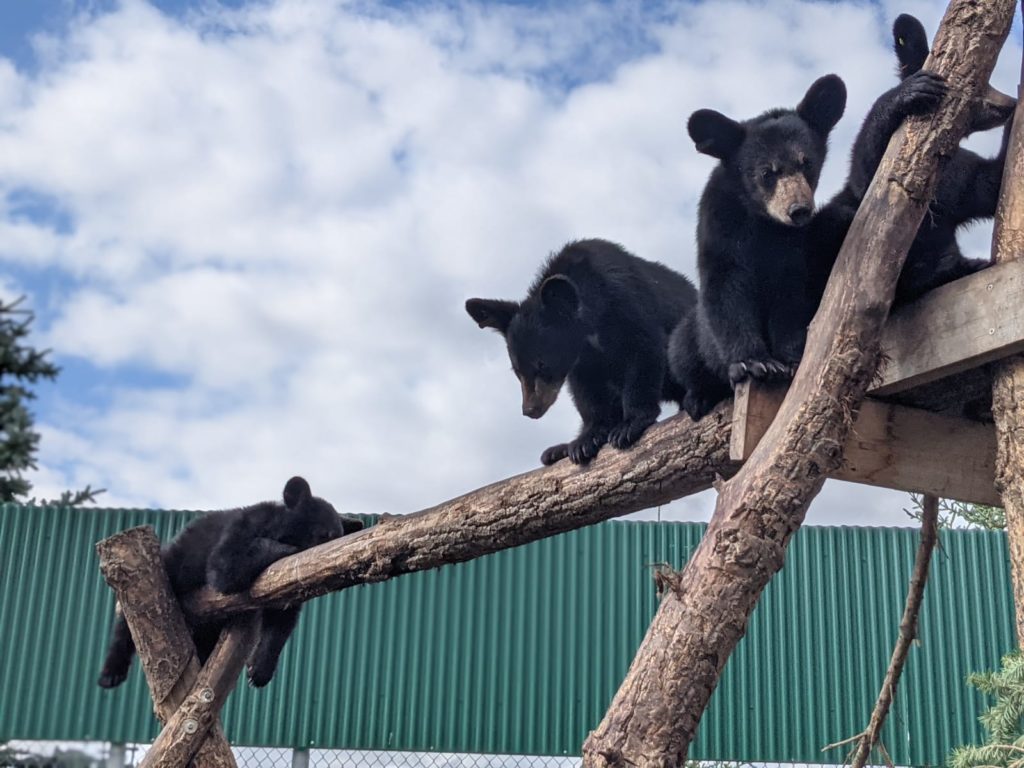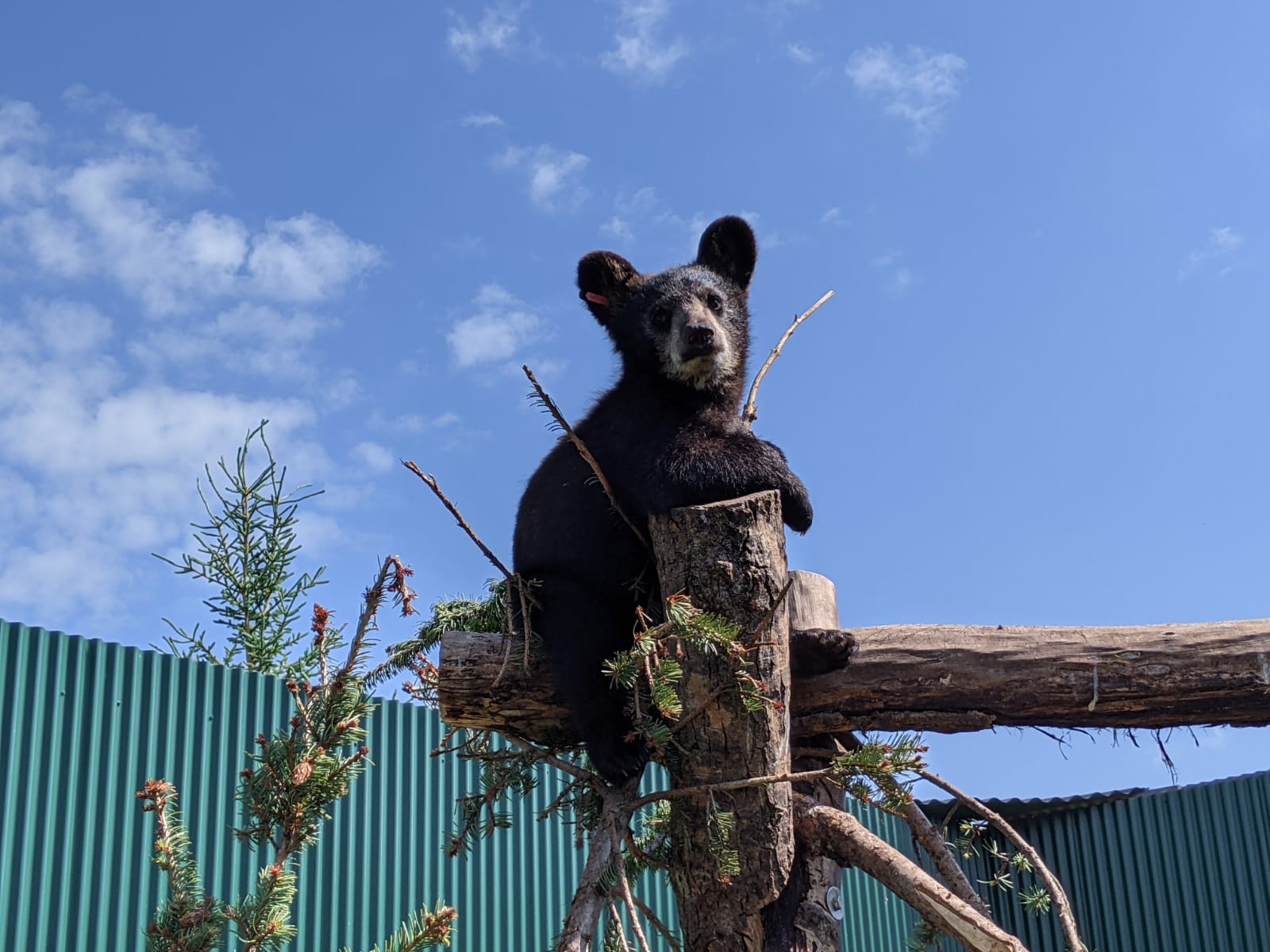By Sydney Nelson, AIWC Volunteer
The mountains, forests, and parklands of Alberta are home to two species of bear: the black bear (Ursus americanus) and the grizzly bear (Ursus arctos horribilis). Most of us can conjure the mental image of a great big bear curled up in a dark cave or den for the winter- maybe they’re even snoring!
Do bears truly hibernate?
Bears are not true hibernators – instead, they go into a lighter form of sleep called “torpor”! The key factor separating bears from more extreme hibernators like bats, squirrels, and snakes, is that bears do not experience the same steep drop in body temperature. Some animals lower their body temperatures to almost 0°C during hibernation. Bears, however, have a standard body temperature of around 37°C and only lower their temperature to around 31°C-33°C during hibernation or “denning”. Pregnant female bears even maintain their standard body temperature while asleep until after the cubs are born- more on that later.
Because they maintain a relatively high body temperature, bears can easily wake up if they perceive a threat. They might even wake up to take advantage of a warm day and grab a snack!

Though bears can wake up easily during the winter, they spend most of the season deeply asleep. For most of the year, bears take 6-10 breaths each minute. When they’re sleeping through the winter, that number lowers to about one breath every 45 seconds. They also slow their heart rate from 40-50 BPM to between 8-19 BPM while denning. This metabolic change means they lose fat slowly and don’t need to urinate or defecate while sleeping, which causes a “tappen” or plug in their colon to form. Tappens may also prevent ants or other pests from entering the bears’ bodies while they sleep.
How do they do it?
Before settling into their dens for the winter, bears experience hyperphagia or extreme eating. Bears are omnivores known to gorge on anything available to them. From vegetation, berries, and honey to insects, ungulates, and carrion, bears can feed for twenty hours a day while preparing for winter. In Alberta, native fruits like buffaloberries are especially important to bears as a source of pre-winter calories.

Bears can lose one-third to half of their body weight during hibernation, and pregnant female bears need to be exceptionally well-prepared. The mating season lasts from May to July, but bears experience “delayed implantation”, meaning that any embryos do not implant or start growing until late autumn or early winter. Female bears carry their pregnancy during the denning period and give birth to their squirrel-sized cubs in February. The cubs instinctively know to start nursing, and they spend the rest of the winter in the den with their mother.
In the spring, bears and their cubs emerge from their dens. Cubs face the threat of running into adult male bears who may be territorial, hungry, and looking for mates. Their first spring is a precarious one.
Bears at AIWC
Bears today face many threats like habitat loss, vehicle collisions, and human-bear conflict. In 2010, grizzly bears were classified as “Threatened” in Alberta. Additionally, not all animal rehabs or rescues have the resources or ability to support injured or orphaned bears. Fortunately, AIWC can rescue, rehabilitate, and release black bear cubs. In 2021, AIWC admitted and provided care for four orphaned black bear cubs. Two of the cubs were twins admitted after their mother was killed. While in care, all four bear cubs prepared for winter by feeding on around 8 kilograms of food a day, including mountain ash berries, crabapples, and carrots- many of which were generously donated by our supporters!

The bear cubs were released in October of 2021, and they successfully denned for the winter! The success of these cubs during their hibernation cycle was due, in part, to donations and symbolic adoptions from the public. Each spring, new cubs will emerge with their mothers, and organizations like AIWC will continue to care for bear cubs in need. If you’d like to help us care for Alberta’s bear population, please consider donating, symbolically adopting an animal, or visiting our online shop at aiwc.shop!
References
- Know Your Bears [webpage], The Government of Alberta [Accessed 2021 Dec 06] https://www.alberta.ca/know-your-bears.aspx
- Morgan, C, Ward, A. Ursinology (BEARS) with Chris Morgan [Ologies podcast episode part 1 of 2]; Apr 7, 2021. https://www.alieward.com/ologies/ursinology
- Bears’ Mysterious ‘Fecal Plug’ [blog post], The North American Bear Center [Accessed 2021 Dec 06] https://bear.org/bears-mysterious-fecal-plug/
- “Hyper-What?” [blog post], Bear Smart [Accessed 2021 Dec 15] http://www.bearsmart.com/blog/hyper-what/
- Denning and Hibernation Behaviour [webpage], National Park Service [Accessed 2021 Dec 15] https://www.nps.gov/yell/learn/nature/denning.htm
- Barker, K. Sleeping Beauty: What Do Bears Do All Winter? [webpage], Where Canadian Rockies [Accessed 2021 15 Dec] [https://whererockies.com/2021/01/25/torpor-what-do-bears-do-all-winter/
- Bear Behaviour and Reproduction [webpage], Large Carnivores [Accessed 2021 Dec 15] http://www.largecarnivores.fi/species/brown-bear/bear-behaviour-and-reproduction.html
- Grizzly Bear Recovery Plan- Overview [webpage], The Government of Alberta [Accessed 2021 Dec 15] https://www.alberta.ca/grizzly-bear-recovery-plan-overview.aspx






